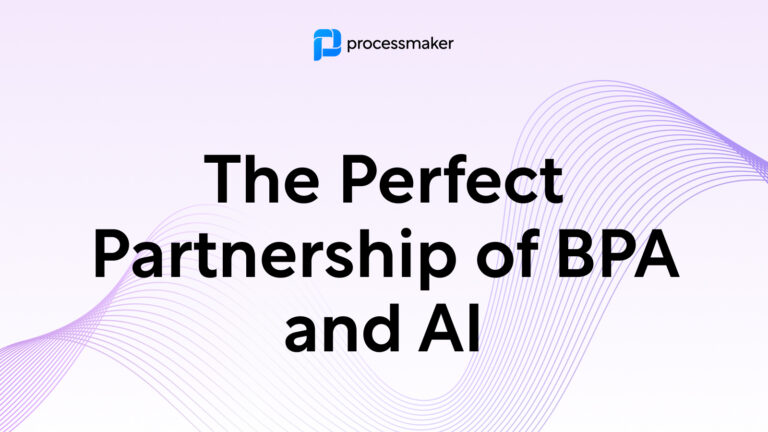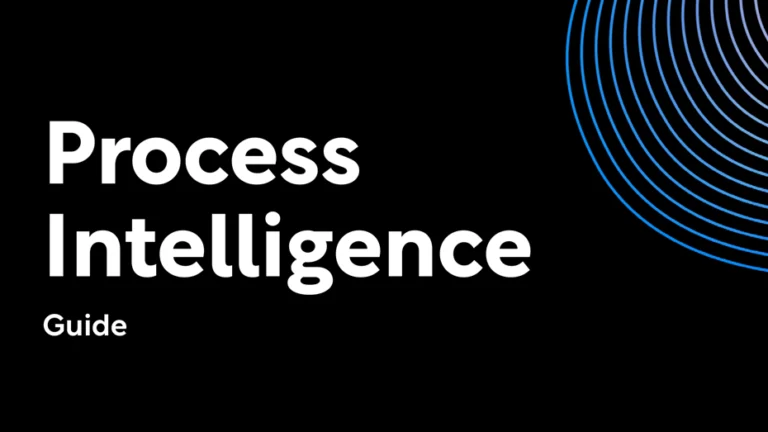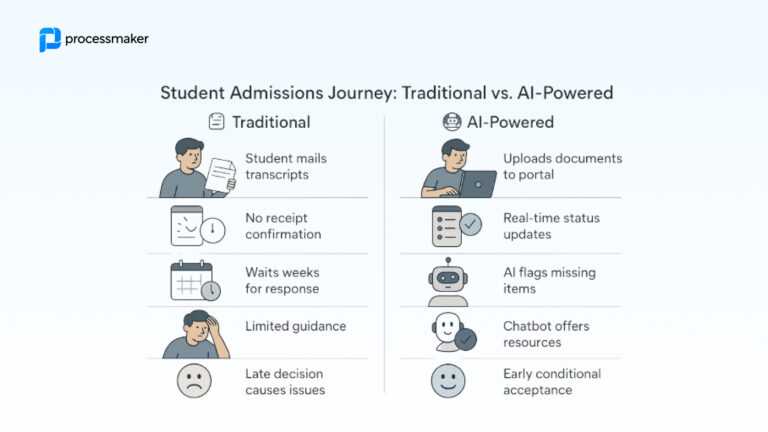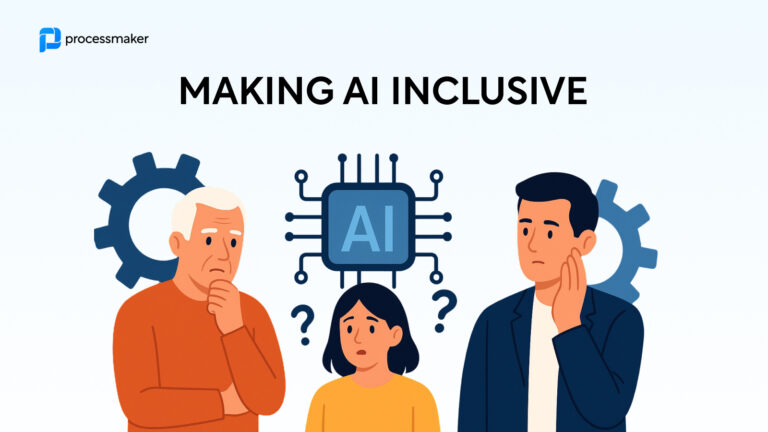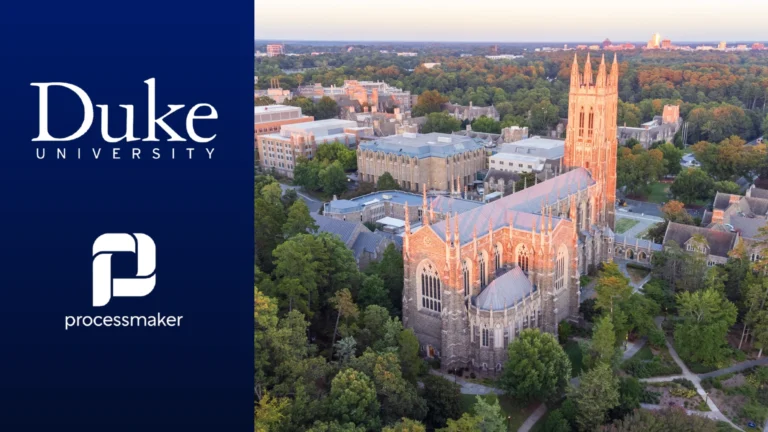In the age of generative breakthroughs, the question isn’t whether AI is powerful—it’s whether it’s productive. For enterprises, the true unlock lies not just in deploying smart models, but in doing so safely, consistently, and at scale. That’s where Business Process Automation (BPA) comes in. At ProcessMaker, we believe the future of automation lies in harmony—not in replacing structure with intelligence, but in blending them.
AI needs structure to reach its full potential, while BPA needs intelligence to evolve. This symbiotic relationship between Business Process Automation (BPA) and AI represents the next frontier in organizational transformation—one where guardrails enable innovation rather than constrain it.
What Is Agentic AI?
Agentic AI refers to AI that can:
- Make autonomous decisions
- Proactively initiate actions
- Learn and adapt over time
- Operate in context and with goals
This is a fundamental leap from traditional automation or passive “AI add-ons.” Agentic AI doesn’t wait for instructions—it detects signals, understands context, and acts.
Artificial intelligence, for all its sophistication, is fundamentally a tool that requires boundaries to operate effectively. Without proper guardrails, AI systems can produce outputs that are not only incorrect but potentially harmful to business operations and stakeholder trust.
Why AI Needs the Structure of BPA
AI excels at decision-making, but lacks the procedural backbone to:
- Ensure compliance
- Maintain auditability
- Manage exceptions
- Provide human checkpoints
- Operate consistently across teams
Business Process Automation provides these essential guardrails by embedding structure, rules, and oversight directly into workflows. These natural boundaries help AI operate safely within defined parameters, ensuring that autonomous systems remain aligned with organizational objectives and compliance requirements.
Example:
Consider the financial services sector, where AI might process loan applications. Without BPA’s structured approach, an AI system could approve loans based on incomplete data or biased algorithms.
However, when embedded within a well-designed BPA framework, the same AI operates within clearly defined approval limits, data validation rules, and human oversight triggers, transforming a potential liability into a competitive advantage.
The Reverse Is Also True: Why BPA Needs AI
Conversely, BPA systems that lack intelligence often become rigid. They require extensive configuration and can’t adapt to new contexts or edge cases.
AI transforms these rigid systems into adaptive systems that are smarter, faster, and more resilient. Instead of following predetermined paths, AI-enhanced BPA can evaluate context, assess multiple variables simultaneously, and choose the most appropriate course of action in real-time.
This evolution doesn’t replace the structure that makes BPA valuable—it makes that structure more intelligent and responsive to changing conditions.
Continuous Improvement Through Learning
Perhaps the most transformative aspect of AI integration is its ability to learn and optimize processes over time. Unlike static automation rules that require manual updates, AI systems can identify inefficiencies, test improvements, and implement optimizations continuously.
This continuous improvement capability means that BPA frameworks become more effective over time, automatically adapting to changing business conditions, customer needs, and operational requirements. The structure remains, but it evolves intelligently based on real-world performance data.
Implementation Guidelines
ProcessMaker’s vision is not to replace structured automation, but to elevate it. By embedding AI agents built in FlowGenie Studio, enhanced with RAG Collections and multi-hit decision tables, ProcessMaker transforms static workflows into adaptive ecosystems. Here’s how the implementation may look like:
- Assessment. Successful AI-BPA integration begins with understanding your current process landscape. Organizations should identify “agentic opportunities” within existing processes—strategic points where autonomous capabilities would add the most value without introducing unacceptable risk.
- Establish governance. Before implementing any AI capabilities, organizations must establish clear policies regarding AI decision-making authority. This governance framework should define what decisions AI can make autonomously, when human oversight is required, and how exceptions should be handled.
- Taking a gradual approach. The most successful AI implementations start small and scale systematically. Begin with low-risk, high-value areas where AI can demonstrate clear benefits without introducing significant operational risk.
- Data architecture. AI requires that data is accessible, reliable, and integrated across systems. Organizations must invest in data architecture that can support AI requirements while maintaining the security and governance that BPA frameworks require.
- Organizational change. AI implementation inevitably changes how work gets done and how people interact with systems. Organizations must prepare leadership to manage hybrid human-AI teams and help employees understand how their roles will evolve.
Final thoughts
In the AI conversation, it’s tempting to choose sides: structure or spontaneity, rules or reasoning. At ProcessMaker, we reject that binary. The most resilient systems blend the best of both.
By embedding intelligence within the guardrails of BPA, organizations can move faster without losing control. That’s the harmony we’re building—with ProcessMaker as the conductor.
Read more about Agentic AI:
Whitepaper: Agentic AI at ProcessMaker
Agentic AI in Process Automation
Organizational Readiness for Agentic AI
Ethical Considerations of Agentic AI
Barriers to AI Adoption in Business Process Automation
Making AI Inclusive for Non-Technical Teams
Unlocking the Full Potential of AI: Why Task Mining is Your Secret Weapon
Use cases:
5 Ways Agentic AI Transforms Employee Experiences
Automation in Investment Analysis: How Agentic AI is Transforming the Industry
